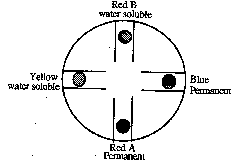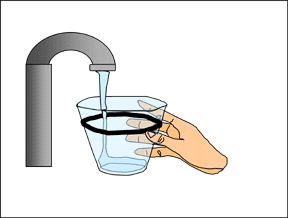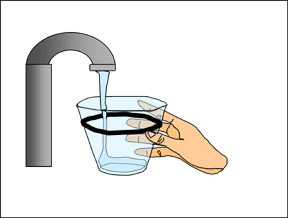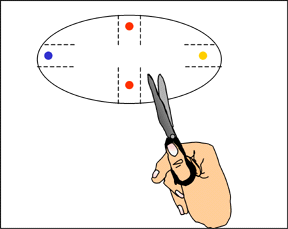Contributed by: New York State Alternative Assessment in Science
Project (NYSED)
4th Grade Performance Task
1996 Administration
Description:
Students observe bleeding of colored inks with water. The task
assesses students' abilities to make simple observations, their
understanding of mixtures, and make generalized inferences from
their observations.
This task is designed to take students approximately 10-15 minutes
to complete.
Overall Task Content Area:
- Physical Science
Specific Knowledge Areas:
-
Performance Expectations:
- conducting investigations
- using equipment
- gathering, organizing, and representing data
- formulating conclusions from investigational data
- applying scientific principles to develop explanations and solve
new problems
National Science Education Standards:
4 B PS 1: Properties of matter: Grades K-4
1.1 Objects have many observable properties, including size,
weight, shape, color, temperature, and the ability to react with
other substances. Those properties can be measured using tools,
such as rulers, balances and thermometers.
4 A SI 1: Abilities necessary to do scientific inquiry:
Grades K-4
1.3 Employ simple equipment and tools to gather data and
extend the senses. In early years, students develop simple skills,
such as how to observe, measure, cut, connect, switch, turn on and
off, pour, hold, tie, and hook. Beginning with simple instruments,
students can use rulers to measure the length, height, and depth
of objects and materials; thermometers to measure temperature; watches
to measure time; beam balances and spring scales to measure weight
and force; magnifiers to observe objects and organisms; and microscopes
to observe the finer details of plants, animals, rocks, and other
materials. Children also develop skills in the use of computers
and calculators for conducting investigations.
(Use the "hot" link on the PALS home page to
check the full text of related National Science Education Standards,
if desired.)
National Council of Teachers of Mathematics:
AL1: Understand patterns, relations and functions:
Grades pre K-5 a. sort, classify, and order objects by size,
number, and other properties
AL4: Analyze change in various contexts :
Grades pre K-5 a. describe qualitative change, such as a
student's growing taller
RP2: Make and investigate mathematical conjectures:
Grades pre K-5
COM1: Organize and consolidate their mathematical thinking
through communication:
Grades pre K-5
General Instructions to the Teacher:
This task is designed to take students approximately 10-15 minutes
to complete.
Students will be working individually during this exercise.
Students should be ready to work as soon as the period begins.
The materials should be set out at each lab station, if possible.
A central supply area, if needed, should be easily accessible. All
supplies should be clearly labeled.
Materials:
The Teacher needs:
- 1 yellow water soluble marker
- 1 red water soluble marker (dot B)
- 1 blue permanent marker
- 1 red permanent marker (dot A)
- scissors
- 1 thin line black permanent marker
- extra paper towel
- extra prepared filter papers (9 cm)
At this station students should have:
- 1-5 oz clear plastic cup of water
- 1- filter paper with colored dots
- paper towel
Advance Preparation:
- Cut the filter paper with 4 tabs (about 1 cm x 3 cm) as shown
in the diagram below. Place a different dot on each of the four
tabs about 1 cm from the end.

- On the clear plastic cup, draw a thin line with a black permanent
marker all the way around the cup about 4 cm from the bottom of
the cup.
- The line will serve as a fill line for the water. The tabs from
the filter paper should just reach the top of the
water line.
- You may have to adjust the tab cuts on the filter paper or the
fill line on the clear glass.
Safety:
- Be careful.
- Teachers and students should always exercise appropriate safety
precautions and utilize appropriate laboratory safety procedures
and equipment when working on science performance tasks.
Extensions/modifications:
- Colored Dots 2 and Colored Dots 3
- Task does not easily lend itself to including mathematical criteria
in the rubric.
| Student: 1) Fill cup with water to "water
line." |
2) Place filter in cup. |
 |
 |
| |
|
|







